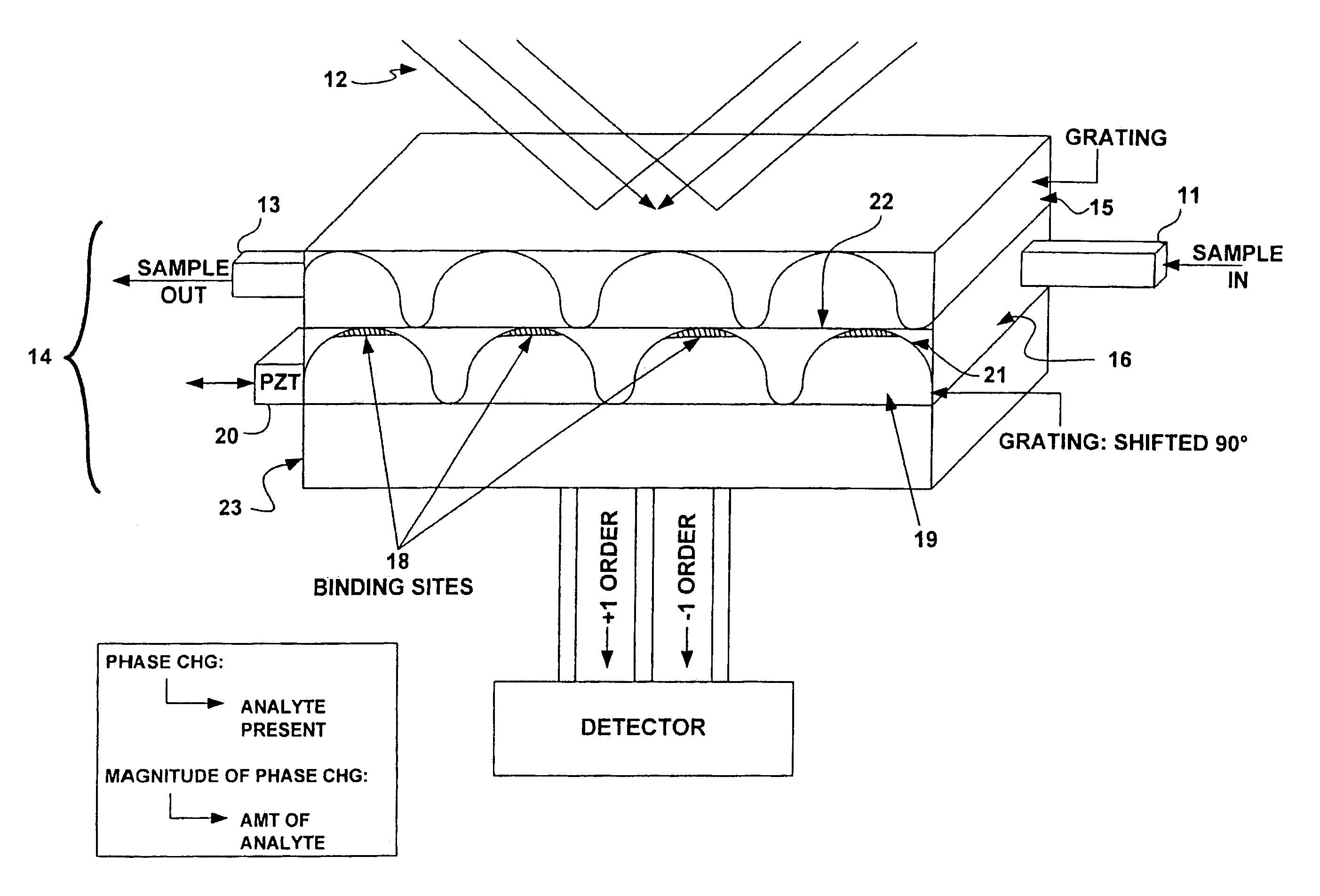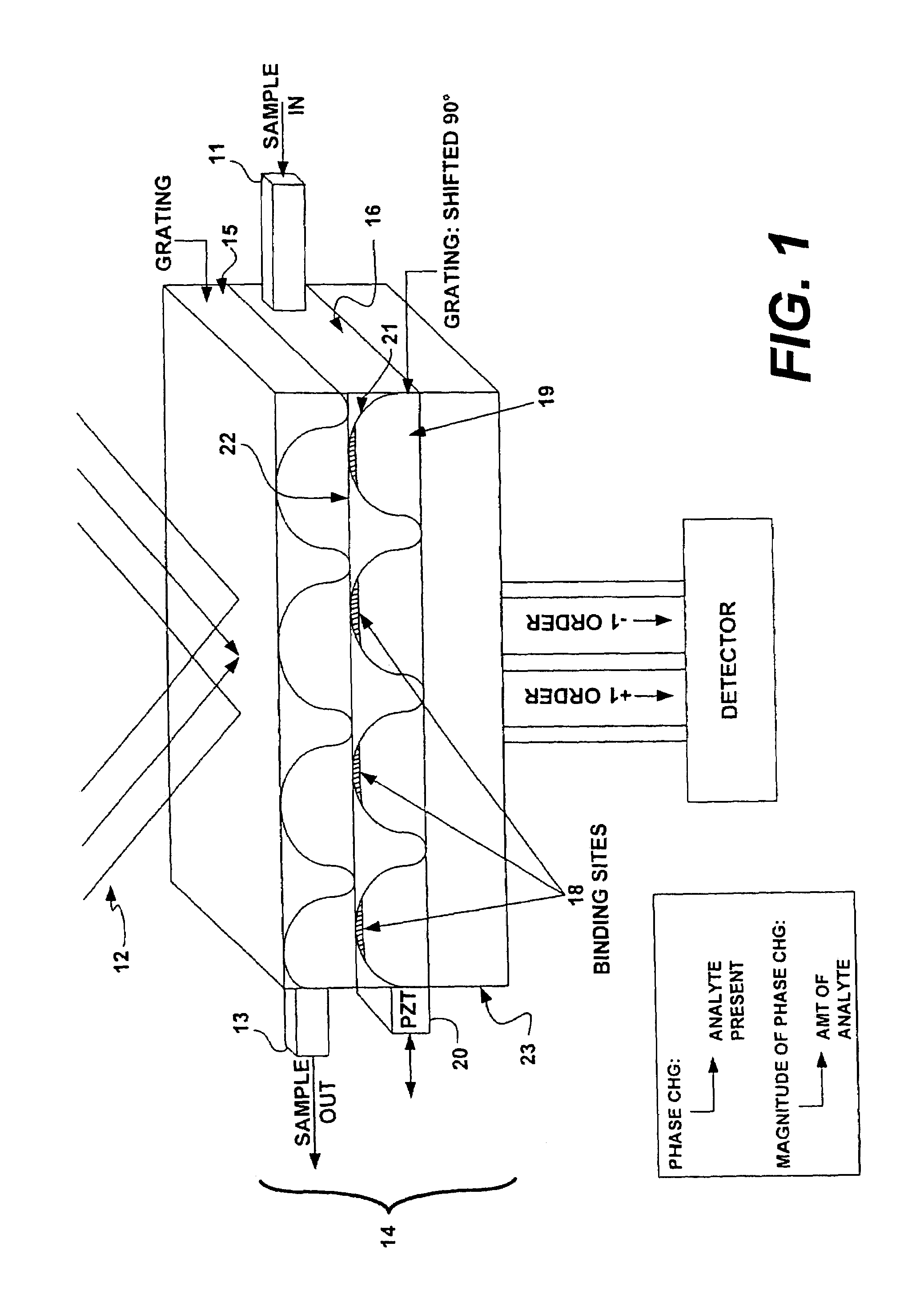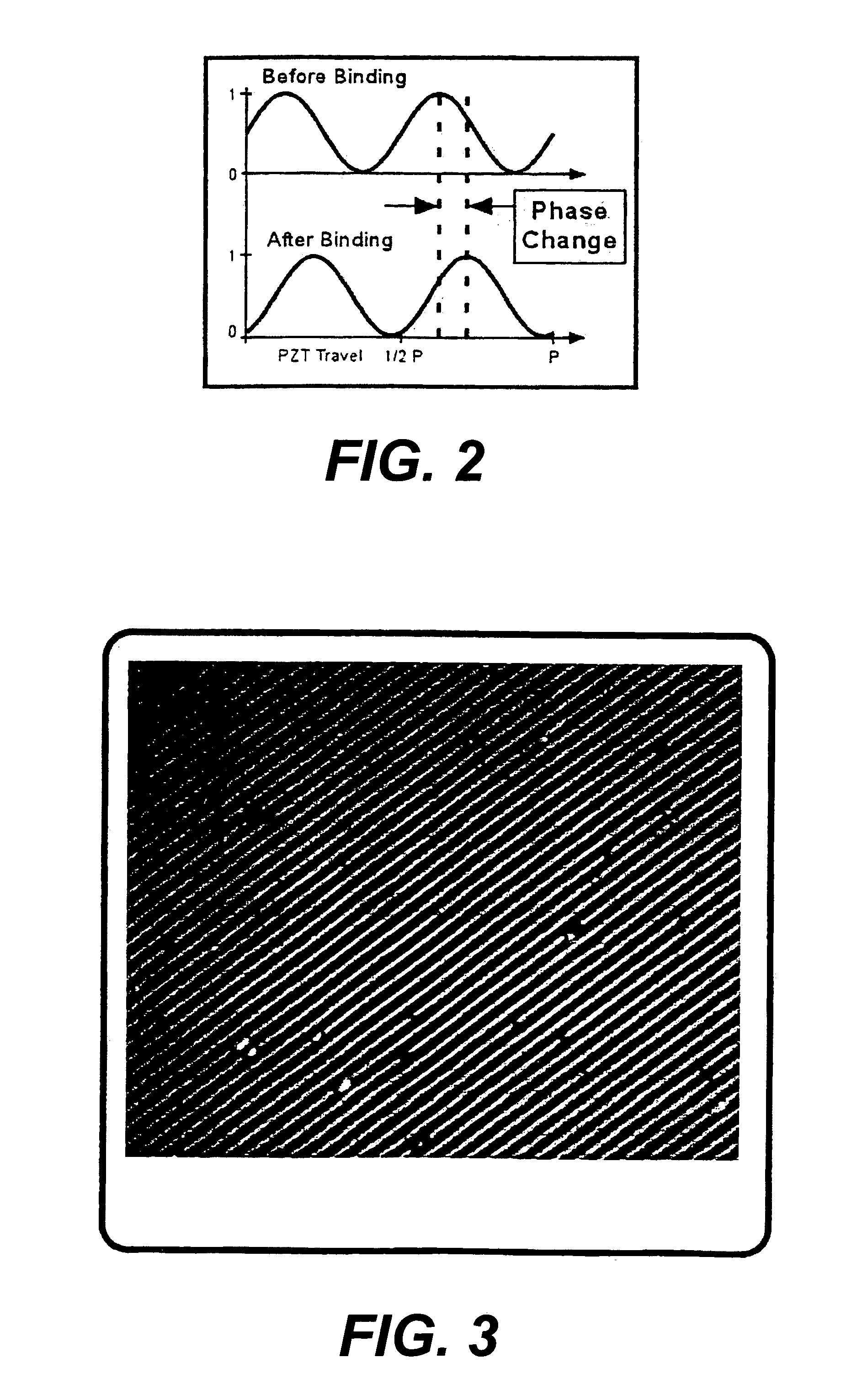Grating sensor
- Summary
- Abstract
- Description
- Claims
- Application Information
AI Technical Summary
Benefits of technology
Problems solved by technology
Method used
Image
Examples
example 1
[0088]FIGS. 5A and 5B illustrate a detailed view of a grating. Molecular receptors, such as antibodies, are placed in precise locations on an optical substrate. In this case, the antibody receptors lie in 2 μm wide lines 30 with 2 μm wide separations 32 (a 4 um period) and are placed on a substrate 34 made of fused silica. This 4 um period will produce 1st order diffraction angle of ˜9 degrees at a wavelength of 633 nm. Blocking material 36 to prevent non-specific binding of receptors and analyte may be placed in the region between the lines. Upon introduction of buffer solution putatively containing the antigen corresponding to the chosen antibody, specific binding between immobilized antibody 38 and analyte 40 occurs at precise locations, i.e. at the peaks of the grating. This molecular binding changes the physical and optical height [(index)×(change in height)] of the grating. In this example, the heights of the antibody (hab)+antigen (hag) layers are expected to be in the 10's o...
example 2
[0089]FIG. 6A shows an optical schematic of a system for detecting a single analyte. In the figure, the light source is a laser 50 emitting coherent light at a wavelength of 633 nm. This light is introduced into a beamsplitter 52 such that two point sources are created. A commercially available single mode fiber optic coupler can be used. These two point sources are then collimated by a lens 54 and directed towards the grating structure. The collimated beams are incident upon the grating structure 56 at an angle corresponding to the +1 and −1 diffraction orders generated by a 4 um period grating. This yields a ˜9 degrees angle of incidence. By using a lens with a 25 mm focal length a point source separation of 7.8 mm at the output of the fiber coupler can be realized. Two gratings, such as that depicted in FIG. 5 are used in the grating structure 56. The two gratings are translated by ¼ period with respect to each other and the separation between the two allows for fluid flow. A gra...
example 3
Multiple Analyte Detection—FIG. 7
[0090]Several detection configurations for multiple analyte detection are depicted in FIG. 7.
[0091]The layout shown in FIG. 7 can be adapted to accommodate multiple analyte detection by modifying the grating assembly to include multiple gratings, each designed to detect different analyte. The grating structure may be placed on a stage such that each grating may be translated to pass under the probing beam of the optical system, much like a ‘stepper’ in photolithography. FIG. 7A illustrates such a system. Such gratings range in size from 10 um and greater.
PUM
 Login to View More
Login to View More Abstract
Description
Claims
Application Information
 Login to View More
Login to View More - R&D
- Intellectual Property
- Life Sciences
- Materials
- Tech Scout
- Unparalleled Data Quality
- Higher Quality Content
- 60% Fewer Hallucinations
Browse by: Latest US Patents, China's latest patents, Technical Efficacy Thesaurus, Application Domain, Technology Topic, Popular Technical Reports.
© 2025 PatSnap. All rights reserved.Legal|Privacy policy|Modern Slavery Act Transparency Statement|Sitemap|About US| Contact US: help@patsnap.com



